Abstract
During a two-year period (1966 to 1968) 70 patients were admitted to the Renal Transplantation Unit at St Mary's Hospital and 22 (31%) developed bacteraemia.
Eighteen of the 25 episodes of bacteraemia occurred after transplantation and seven before. The typical clinical syndrome was uncommon and was only seen in 32% of cases. The presence of shock was not recognizable in the majority of patients probably because they were already receiving steroid therapy.
The commonest infecting organism was Ps. aeruginosa (nine cases) and Gram-negative bacilli accounted for 72% of the bacteraemias. Staph. aureus was isolated in five patients.
A likely source of the infecting organism was found in 80% of cases and the commonest source was the urinary tract.
Serious complications were present in 13 episodes of bacteraemia, and these were peritonitis before transplantation, necrosis of the donor ureter, and severe rejection or polar infarction in the donor kidney after transplantation.
Bacteraemia due to Gram-negative bacilli was associated with complications in 61% of cases. Ps. aeruginosa was almost invariably isolated from complicated cases though Esch. coli was only seen in simple cases.
Antibiotic treatment was successful in 64% of cases but the cure rate was higher (86%) before transplantation than after transplantation (55%). Although the presence of complications did not affect the cure rate in Gram-positive bacteraemia, the cure rate in complicated Gram-negative bacteraemias was poor and associated with a mortality of over 70%.
Patients receiving human cadaveric renal transplants are susceptible to all kinds of bacterial infection including bacteraemia, and the results of antibiotic treatment are dependent on both the nature of the infecting organism and the presence of serious underlying complications.
Full text
PDF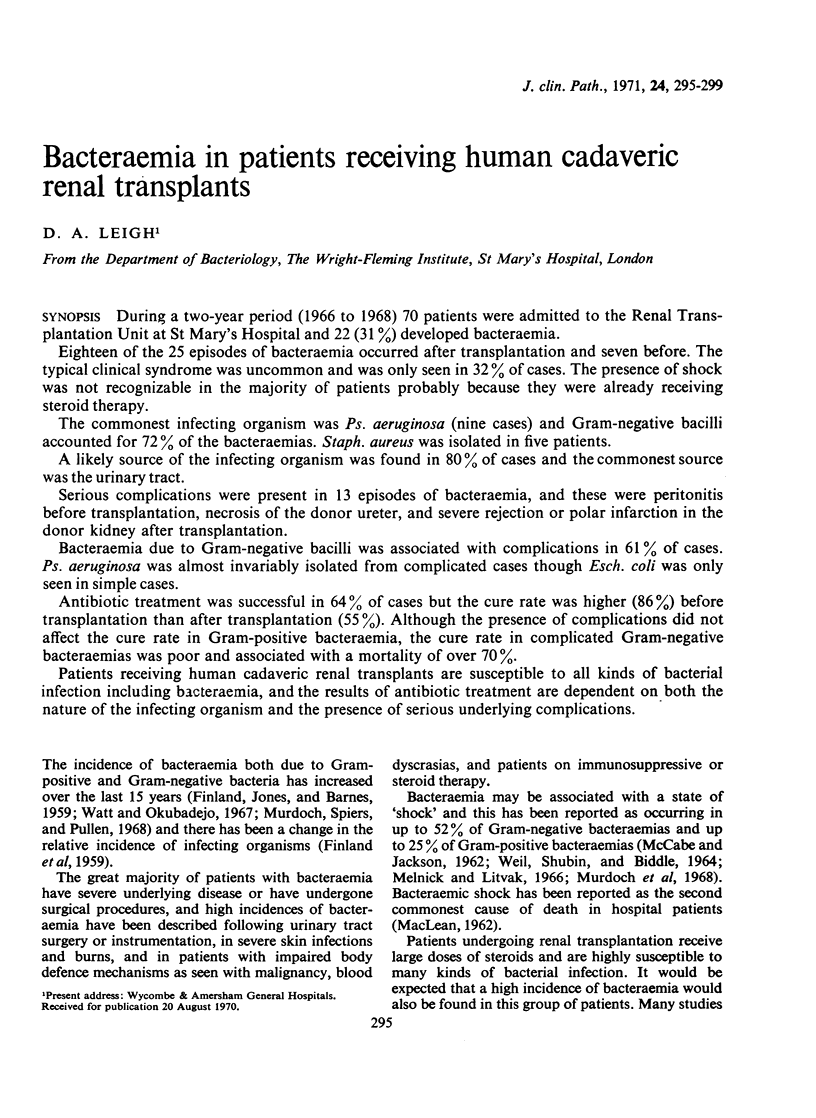
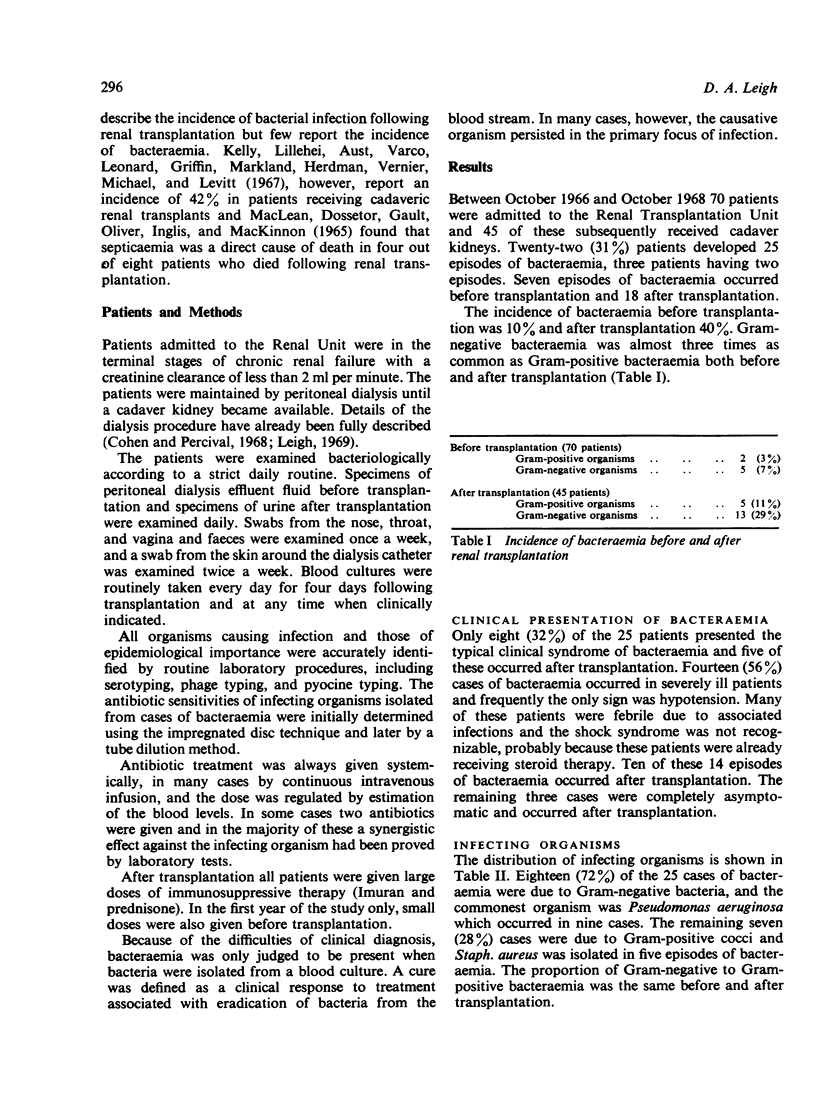
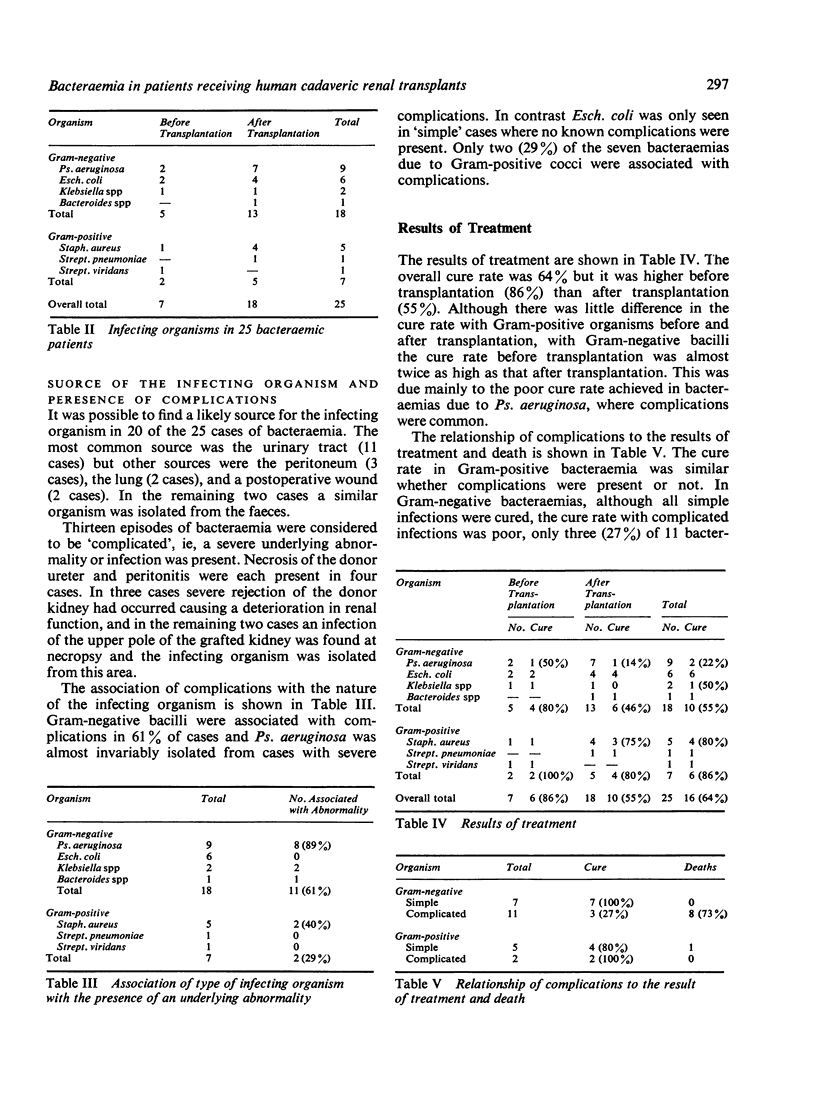
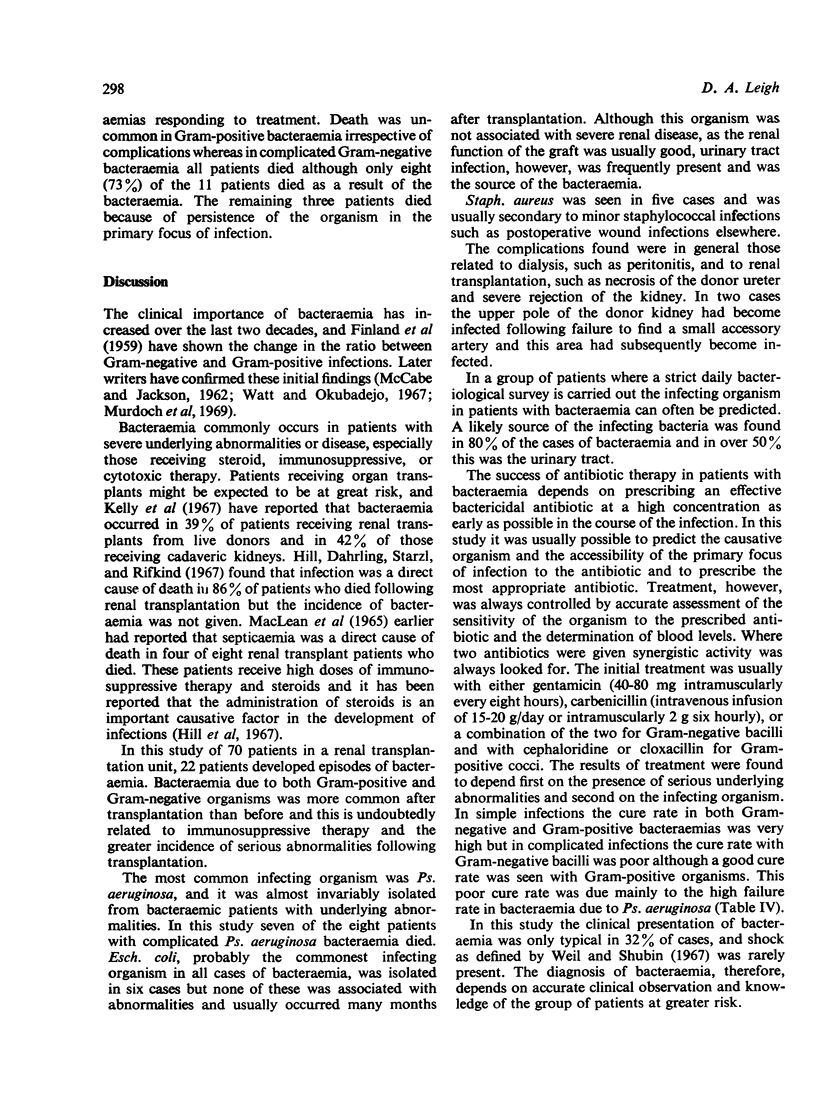
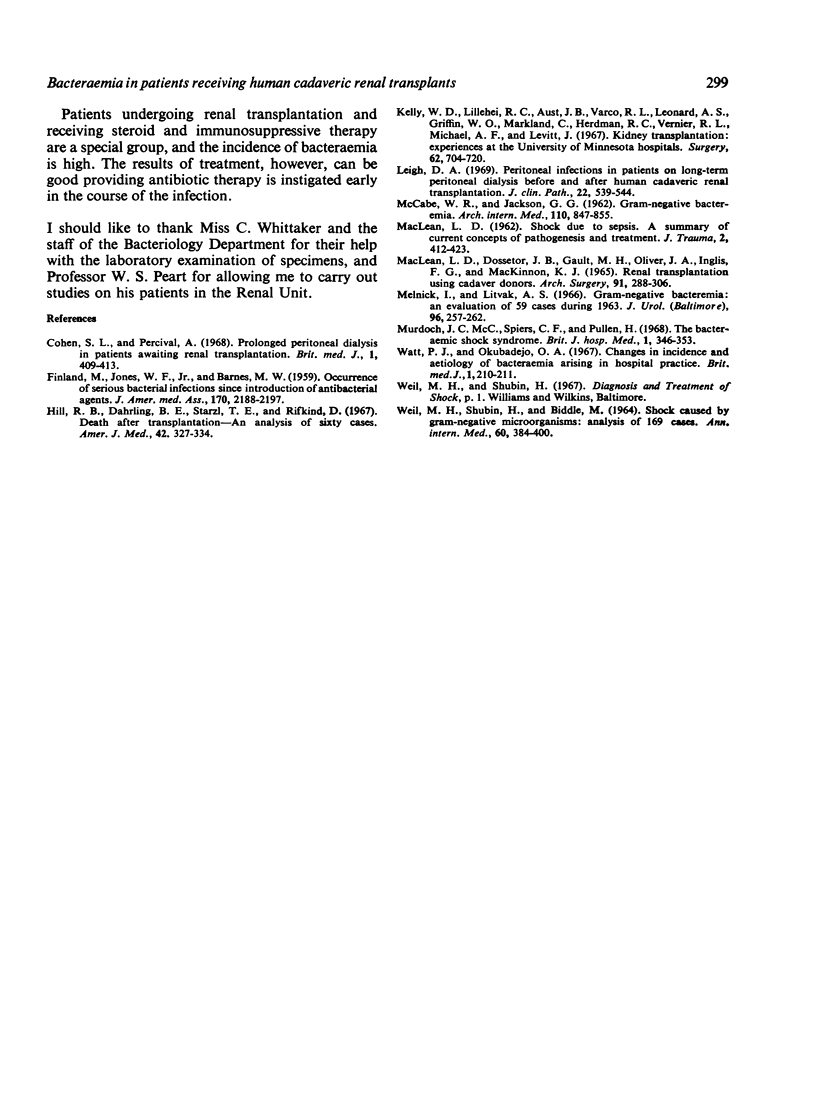
Selected References
These references are in PubMed. This may not be the complete list of references from this article.
- Cohen S. L., Percival A. Prolonged peritoneal dialysis in patients awaiting renal transplantation. Br Med J. 1968 Feb 17;1(5589):409–413. doi: 10.1136/bmj.1.5589.409. [DOI] [PMC free article] [PubMed] [Google Scholar]
- FINLAND M., JONES W. F., Jr, BARNES M. W. Occurrence of serious bacterial infections since introduction of antibacterial agents. J Am Med Assoc. 1959 Aug 29;170:2188–2197. doi: 10.1001/jama.1959.63010180008012. [DOI] [PubMed] [Google Scholar]
- Hill R. B., Jr, Dahrling B. E., 2nd, Starzl T. E., Rifkind D. Death after transplantation; an analysis of sixty cases. Am J Med. 1967 Mar;42(3):327–334. doi: 10.1016/0002-9343(67)90260-4. [DOI] [PubMed] [Google Scholar]
- Kelly W. D., Lillehei R. C., Aust J. B., Varco R. L., Leonard A. S., Griffin W. O., Markland C., Herdman R. C., Vernier R. L., Michael A. F. Kindey transplantation: experiences at the University of Minnesota Hospitals. Surgery. 1967 Oct;62(4):704–720. [PubMed] [Google Scholar]
- Leigh D. A. Peritoneal infections in patients on long-term peritoneal dialysis before and after human cadaveric renal transplantation. J Clin Pathol. 1969 Sep;22(5):539–544. doi: 10.1136/jcp.22.5.539. [DOI] [PMC free article] [PubMed] [Google Scholar]
- MACLEAN L. D. Shock due to sepsis-a summary of current concepts of pathogenesis and treatment. J Trauma. 1962 Jul;2:412–423. doi: 10.1097/00005373-196207000-00009. [DOI] [PubMed] [Google Scholar]
- WEIL M. H., SHUBIN H., BIDDLE M. SHOCK CAUSED BY GRAM-NEGATIVE MICROORGANISMS. ANALYSIS OF 169 CASES. Ann Intern Med. 1964 Mar;60:384–400. doi: 10.7326/0003-4819-60-3-384. [DOI] [PubMed] [Google Scholar]
- Watt P. J., Okubadejo O. A. Changes in incidence and aetiology of bacteraemia arising in hospital practice. Br Med J. 1967 Jan 28;1(5534):210–211. doi: 10.1136/bmj.1.5534.210. [DOI] [PMC free article] [PubMed] [Google Scholar]


